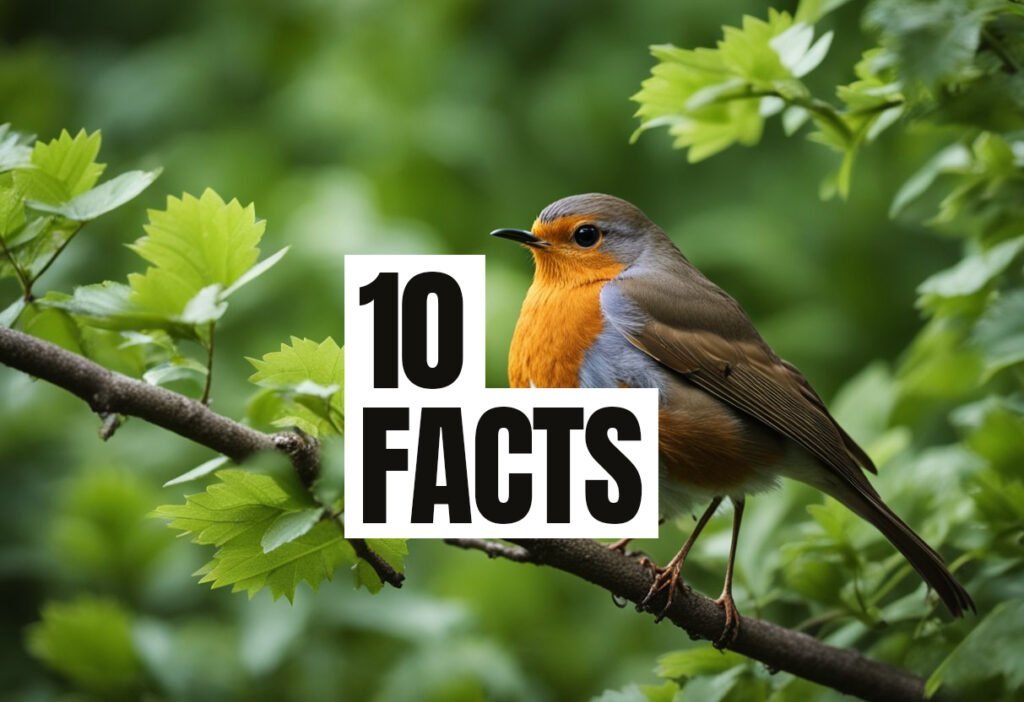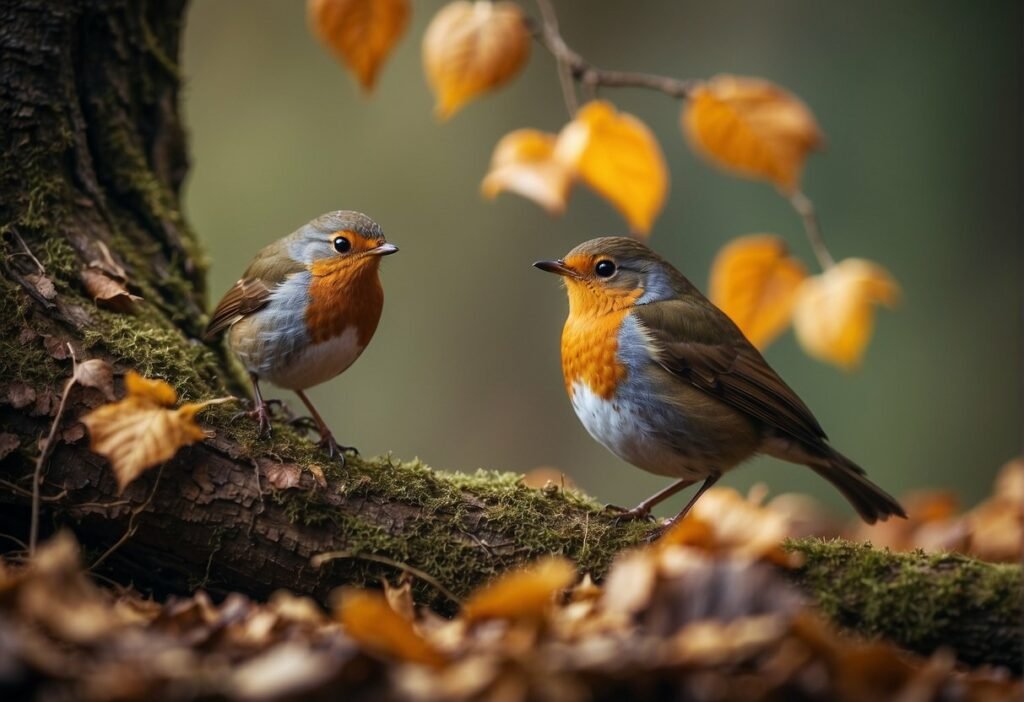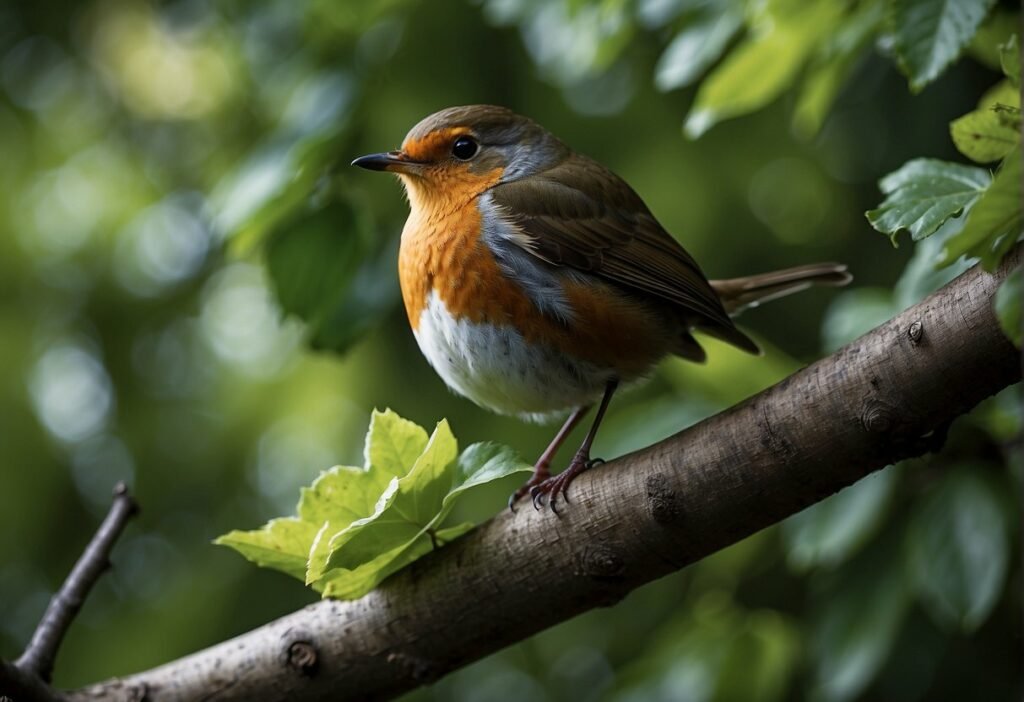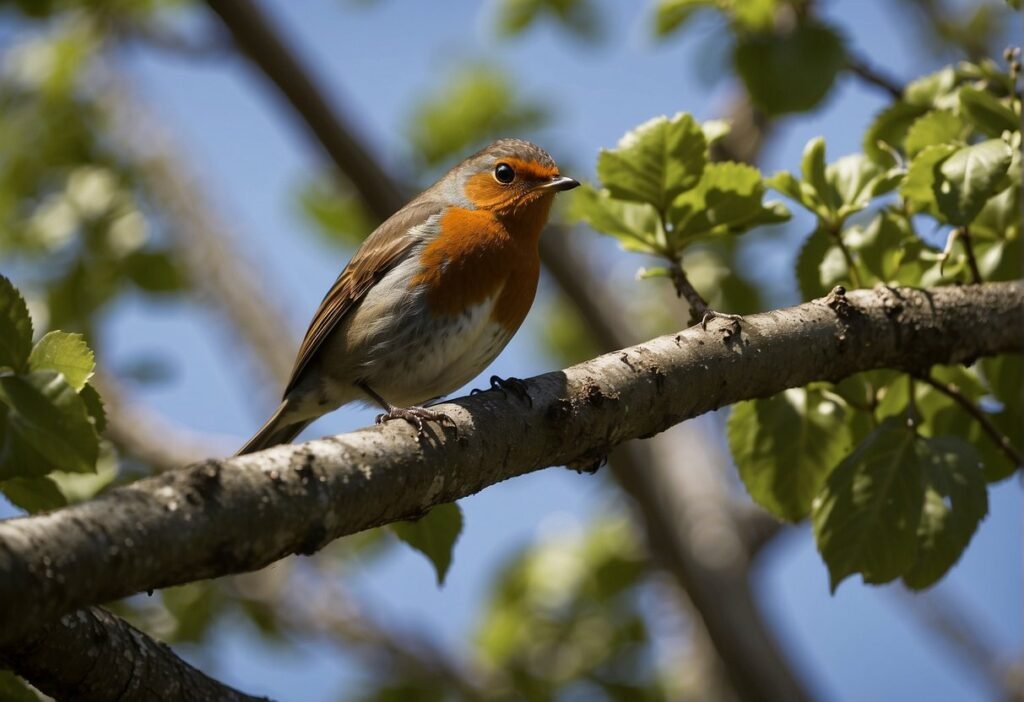Robins are a common sight in North America, and many people enjoy watching them in their gardens or local parks. However, have you ever wondered how weather conditions affect robin behavior? The truth is that weather plays a crucial role in the life of these birds, influencing everything from their migration patterns to their feeding habits.
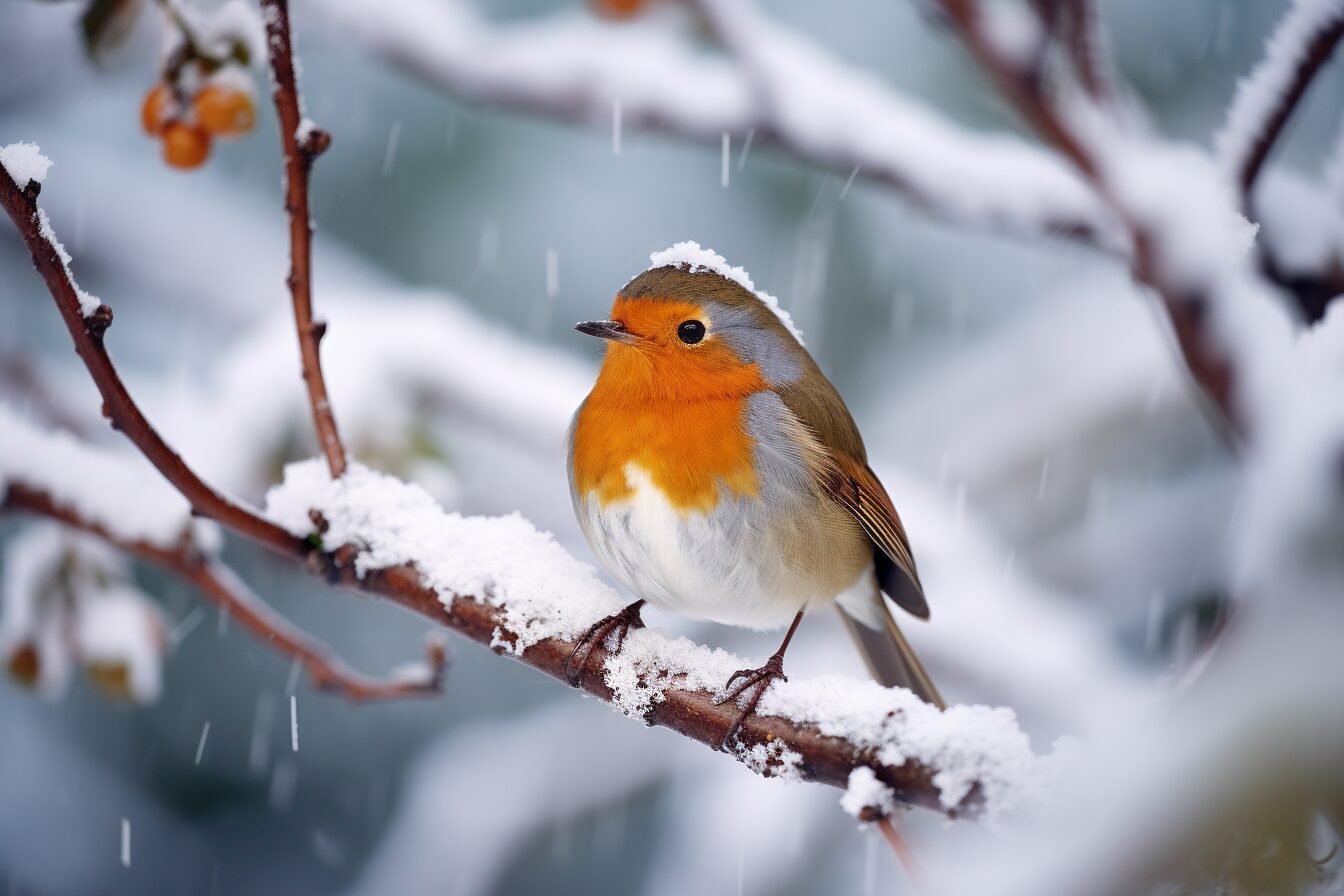
The impact of weather on robin behavior is complex and multifaceted. For example, temperature and wind patterns can affect when and where the birds migrate, while food availability can influence their feeding behavior. Cold weather and limited food sources can prompt American Robins to migrate southwards, while warmer weather and increased food availability can encourage them to stay put.
Key Takeaways
- Weather conditions have a significant impact on robin behavior, influencing everything from migration patterns to feeding habits.
- Robins are resilient birds that can adapt quickly to sudden weather changes during migration, altering their flight speed and direction to avoid unfavorable conditions.
- Understanding the impact of weather on robin behavior is essential for their conservation, as climate change continues to affect their habitats and food sources.
Impact of Weather on Robin Behavior
American Robins are migratory birds that move across North America in response to seasonal changes and weather patterns. Weather conditions play a significant role in influencing their behavior, particularly their feeding, breeding, and nesting activities.
Seasonal Changes and Migration Patterns
Robins migrate in flocks, moving from their wintering grounds to their breeding grounds in the spring. Temperature and precipitation affect their spring and fall migrations. For instance, robins tend to migrate earlier in the spring when temperatures are warmer, and food availability is higher [1]. Extreme weather conditions, such as storms, can delay their migration, causing them to arrive later than usual.
Feeding and Foraging Behavior
Robins feed on a variety of foods, including insects, earthworms, and berries, depending on food availability. Weather conditions influence their feeding behavior, with robins increasing their feeding activity on sunny days and decreasing it on rainy days [2]. During dry weather, they are more likely to forage on lawns and open areas for insects and earthworms [2].
Breeding and Nesting Activities
Weather conditions also affect robin breeding and nesting behavior. Temperature fluctuations can affect the timing of their breeding season, with warmer temperatures leading to earlier breeding [1]. Robins build their nests in trees and shrubs, and their nesting behavior is territorial. They defend their nesting territory against other robins and predators [3]. During breeding season, robins feed on a diet rich in protein to provide the energy needed to care for their young [2].
In conclusion, weather conditions have a significant impact on American Robin behavior, influencing their migration, feeding, breeding, and nesting activities. Understanding these impacts can help us better protect and conserve these migratory birds.
Adaptations and Conservation
Physiological and Behavioral Adaptations
The American Robin has developed several physiological and behavioral adaptations to cope with changing weather conditions. For example, during winter, they fluff up their feathers to trap air and create an insulating layer that helps them maintain their body temperature. They also move in flocks to find food sources and reduce the risk of predation. During extreme weather events such as snowstorms, they may become dormant to conserve energy and reduce heat loss.
In addition to these physiological adaptations, American Robins have also developed several behavioral adaptations. They sing to establish territories and attract mates. They also adjust their migration patterns based on weather conditions to ensure they arrive at their breeding grounds at the optimal time.
Human Impact and Conservation Efforts
The American Robin’s habitat has been affected by human activities such as urbanization and deforestation, leading to a decline in their population. Scientists have been conducting research to understand the impact of climate change on the American Robin’s migration patterns and breeding success.
Conservation efforts have been put in place to protect the American Robin’s habitat and ensure their survival. These efforts include restoring and preserving their natural habitat, reducing the use of pesticides, and educating the public about the importance of conservation.
Overall, the American Robin has developed several adaptations to cope with changing weather conditions, but human impact has threatened their survival. Conservation efforts are crucial to ensure the long-term survival of this important species.
Frequently Asked Questions
What adaptations allow robins to survive winter conditions?
Robins are well adapted to survive winter conditions. They have several physical adaptations, such as growing extra feathers to keep warm and changing their diet to eat more fruits and berries. Additionally, robins often gather in flocks during the winter to share body heat and protect each other from predators.
At what time of year do robins typically begin their migration south?
Robins typically begin their migration south in the fall, usually around September or October. However, the exact timing of their migration can vary depending on factors such as weather conditions and food availability.
How does climate change impact the migratory patterns of robins?
Climate change has a significant impact on the migratory patterns of robins. Rising temperatures can cause robins to shift their habitat range northward, seeking cooler temperatures. Additionally, changes in weather patterns can affect the timing of their migration, causing them to arrive at their breeding grounds too early or too late.
Why are robins often observed during rainy weather?
Robins are often observed during rainy weather because rain can make it easier for them to find food. Rain helps to soften the ground, making it easier for robins to find worms and other insects. Additionally, rain can cause earthworms to come to the surface, making them more accessible to robins.
What environmental interactions are crucial for robin survival?
Robins rely on several environmental interactions for their survival. For example, they need access to clean water for drinking and bathing, and they require suitable nesting sites for breeding. Additionally, robins rely on other species, such as earthworms and fruit trees, for food.
How does the behavior of robins change throughout their migratory journey?
The behavior of robins can change significantly throughout their migratory journey. During the breeding season, robins are more territorial and aggressive, defending their nests and mates from other birds. However, during migration, they become more social and may gather in large flocks. Additionally, robins may change their diet and feeding behavior during migration, depending on the availability of food.
